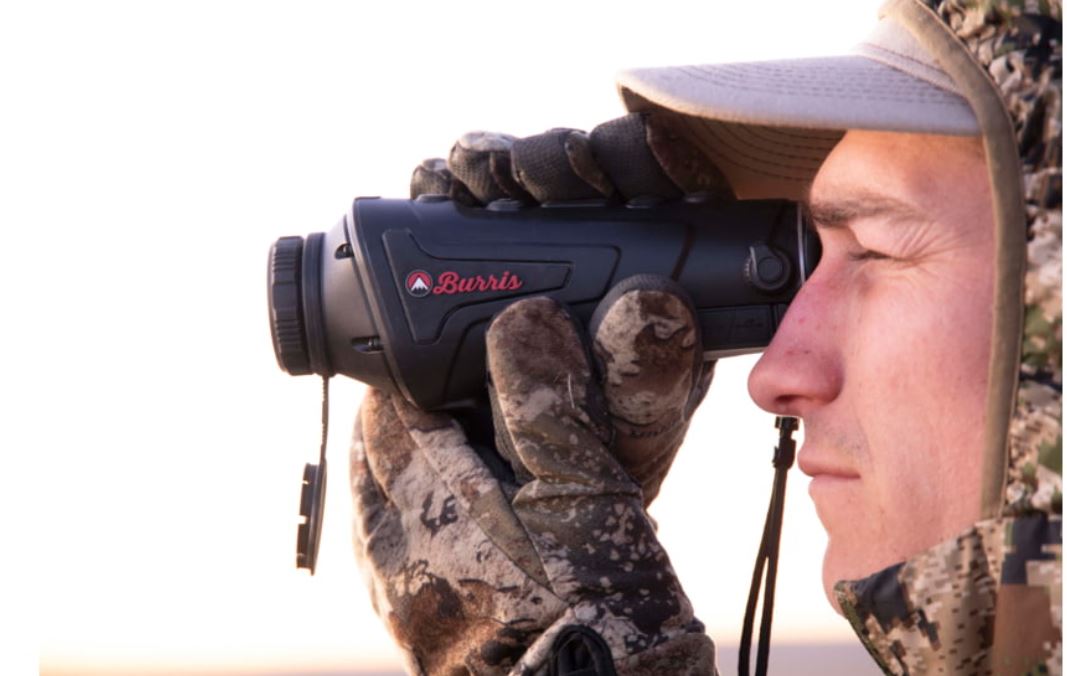Best thermal monoculars for the money
Although thermal monoculars have a lot of uses, they’re particularly popular among hunters and are preferred over night-vision devices because of their ability to unearth prey concealed behind obstacles such as shrubs and trees.
Choosing the best thermal monoculars for the money might be difficult, however, because the market is crowded with options.
You nevertheless are in the right place, as we will give you a short guide to the best alternatives to accompany yourself on your hunting trips.
Here is the summary
| Product | Image | Best Price |
| Pulsar Helion 2 XP50 2.5-20 | 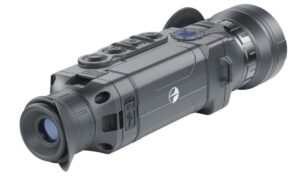 |
|
| Leica Calonox View 2.5 x 42mm | 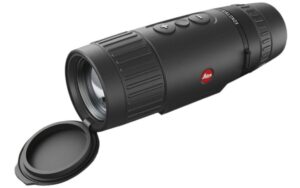 |
|
| Burris BTH Thermal Hand-held Monocular | 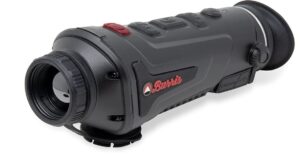 |
|
| ATN OTS-XLT 2.5-10x Thermal Viewer | 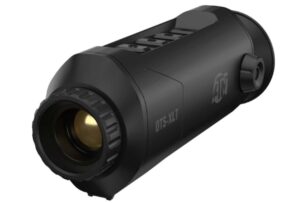 |
|
| AGM Global Vision Taipan TM10-256 | 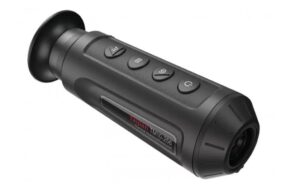 |
|
| FLIR Systems Scout II 320 |
|
|
The detailed reviews….
1. Pulsar Helion 2 XP50 2.5-20 Thermal Monocular

The pulsar helion may cost a little more, but it offers outstanding value that is justified by its pricing. The monocular has a detection range of 1900 yards thanks to a very capable sensor with 640 x 480 pixels.
The finished image is then displayed on a high-definition screen with a resolution of 1024 × 768 pixels and a refresh rate of 50Hz.
A rechargeable battery, with a 8-hour battery life, adds value to your purchase as well. Along with the 8 different color palettes that give you different options on how you will see your targets. You also get a recording feature with an internal 16GB memory.
Pros
- 16 GB of internal storage
- 8 color palettes
- 8hrs of battery life
- Stadiametric rangefinderder
- Picture-in-picture function
- IP-X7 water resistance rating
Cons
- feels bulkier than the competition
2. Leica Calonox View 2.5 x 42mm Thermal Imaging Monoculars

This thermal monocular does most of the things well, and it should be your first option when you are looking for an all-rounded option. With a detection range of 3000 meters, it is probably much more than many other monoculars on the market.
A potent sensor measuring 640 x 512 pixels is also able to deliver superb images onto a 1280 x 960-pixel high-definition display with a 50 Hz refresh rate.
The monocular is portable yet durable because construction uses a strong plastic lined with rubber armoring and one-piece construction. The battery is decent and capable of keeping it running for 6 hours yet a power bank may be used to easily recharge the battery through its USB C port
Pros
- Long acquisition range of 3,000 yards
- Great image quality
- Solid build quality
- Portable dimensions
Cons
- Pricey
3. Burris BTH Thermal Hand-held Monocular

Consider these Burris thermal monoculars if you require numerous customizations, in addition to value for money. These monoculars have 5 different color palettes, adjustable brightness, adjustable contrast, as well as a rangefinder for measuring distances. In addition, they include a highly sensitive 400 x 300-pixel sensor with a range of more than 750 yards.
The Burris has an integrated lithium-ion battery that offers continuous operation for more than 5 hours. Just enough for you to be able to search for all of your targets.
The device supports wi-fi and enables you to utilize an app to capture all of your favorite photos and videos as you proceed with your hunt. Overall, these monoculars offer great capabilities within a small package.
Pros
- Portable dimensions
- Real-time wi-fi capability
- Simple controls
- USB-C charging
Cons
- Smaller detection range (750 yards)
4. ATN OTS-XLT 2.5-10x Thermal Viewer

This is the best option when it comes to budget alternatives. The ATN OTS Lt is popular because it strikes a very good balance between performance and price. Additionally, you get an exceptional 10+ hours of battery life because of its low power usage.
The monocular uses a sensor with a small resolution of 160 x 120 pixels, that provides about 670 meters of detection range. A mini display with a resolution of 720 x 576 pixels then subsequently shows the final image.
Included in it is a built-in rangefinder that can measure up to 263 yards, as well as 8GB of internal storage. It is portable and lightweight, weighing just 370 grams, and can be utilized for a wide range of duties, including law enforcement, hiking, vacation, and search and rescue.
Pros
- Affordable
- 8GB internal storage
- Stadiametric rangefinder
- Video recording capability
- Lightweight
- Excellent battery life
Cons
- limited range(670 yards)
5. AGM Global Vision Taipan TM10-256 Thermal Imaging Monocular

Despite its relatively short range of approximately 460 yards, this compact thermal monocular offers good value for money due to the reasonable performance of its modest 256 x 192 sensor.
The sensor is quite sensitive and produces excellent images even in complete darkness. The images are then shown on a 720 x 540 LCOS display of excellent quality.
The monocular also includes a unique Hot Spot feature that detects and marks the hot spot of the highest temperature. It is available at an affordable price, meaning that, you can save on the extra premium if you do not need the long detection range.
You get a decent built-in lithium-ion battery lasting up to 6 hours, Wi-fi capability, and an internal storage space of 8Gb. Where you can store all your favorite recordings.
Pros
- Great performance in complete darkness
- 3 years transferrable warranty
- Wi-fi hotspot
- Video recording capability
- Affordable
Cons
- lacks a rangefinder
6. FLIR Systems Scout II 320 Thermal Night Vision Monocular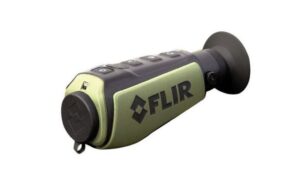
These are sleek and capable thermal monoculars that can be used for all of your outdoor activities, and they will provide you with excellent value for money. The FLIR Scout II can detect targets as far as 600 yards out, both day and night.
It uses a sensor measuring 336 x 256 pixels to deliver images on a display measuring 640 x 480 pixels. However, the scope falls short due to its slow refresh rate (9Hz) which may present a challenge when tracking moving targets
The monocular stands out for several characteristics, including its rugged design, broad field of view, and use of premium seals to make it weather-resistant.
It is also easy to use, features ergonomic proportions, is lightweight, and gives you 3 different palettes with excellent contrast for a clear distinction of your targets.
Pros
- Wide field of view for situation awareness
- Built-in Utility light
- Fits easily in the palm of your hand
- Lightweight (12 Oz)
- Easy-to-use functions
Cons
- Small refresh rate
Specs Comparison Table
We look at three of the best performers on the list and compare their specifications.
| Leica Calonox View 2.5 x 42mm | Pulsar Helion 2 XP50 2.5-20 | ATN OTS-XLT 2.5-10x | |
| Detection Range | 1,000M | 1,800M | 850M |
| Magnification | 2.5X | 2-5-20(x8 zoom) | 2.5-10x |
| Sensor resolution | 640 x 512 (12 µm) | 640 x 480 (17 µm) | 160×120 px (12 µm) |
| Display Resolution | 1280 x 960 px | 1280 x 960 px | 720×540 px |
| Frame rate | 50 Hz | 50Hz | 50Hz |
| Internal Storage | 16GB | 16GB | 8GB |
| Battery life | 5-6 Hrs | 8 Hrs | 10 hrs |
| Weight | 685g | 500g | 370g |
Best Thermal Monoculars for The Money- Buying Guide
Resolution
There are two types of resolutions on thermal monoculars, one is the resolution of the thermal sensor. The other is that of the display. The thermal sensor also known as a microbolometer is responsible for detecting the heat and transforming it into an electrical signal that is displayed to the user.
The microbolometers come in different pixel densities, such as 160 x 120, 384 x 288, and 640 x 480. More heat sensitivity and improved image quality are both associated with higher densities.
Conversely, the resolution of the display matters when it comes to displaying quality images. just like the thermal sensor, a higher pixel density means a better quality of the displayed image. Therefore, when purchasing a thermal monocular, it is a wise choice to take into account the pixels of both the sensor and the display.
Magnification
Optic magnification can aid in spotting farther items much closer, while it is not entirely necessary. High maximum magnification, defined as anything more than 5x, has the drawback of decreasing the quality of the images. And the image ends up looking pixelated.
Refresh rate
This is the rate in Hz at which the image corresponding to the target item is regenerated per second. Usually, the best monoculars have a refresh rate of at least 30Hz, but the higher the refresh rate, the sharper the image will appear and the less lag there will be when tracking targets.
Field of View
On a monocular, you frequently encounter figures like 8.3×6.2. These numbers, which are measured in degrees on the vertical and horizontal angles, represent the angular path that the thermal monocular can perceive. With a broader field of view, the monocular can scan a larger area at once, which is very helpful while scouting moving targets.
Range
The detection range denotes the furthest distance at which a target can be detected by a monocular. Simple models can cover limited distances (less than 600 yards). But more sophisticated models are capable of detecting distances over 3000 yards. This is a result of the stronger and more sensitive sensor they use.
Color modes
Different thermal monoculars display the thermogram using different colors. some give you the option to choose between different pairs. The types of color modes is a characteristic one should consider especially if suffering from color blindness and cannot distinguish certain colors
Battery life
Long periods in the field are typically spent using the thermal monocular. This indicates that for the activity to be effective, you’ll need a strong battery that will provide you with enough juice to endure for a long time, ideally longer than 4 hours. you can also consider devices that let you easily recharge or swap the batteries.
Weight
A bulky monocular will be a hindrance to carrying and would easily be misplaced out in the woods. Although it isn’t much of a problem, you should nonetheless take weight into account when choosing a monocular.
Best Thermal Monoculars for The Money-FAQs
Can a thermal monocular be used in daylight?
Yes, you may use the thermal monocular outside during the day. This is because it does not rely on light to display images, therefore it will not be impacted by the excessive light present during the day.
Is thermal better than night vision?
Thermal and night vision can be used interchangeably because they are both considered night vision devices. The thermal devices, however, have a slight edge because they function well both during the day and at night. The thermal will also function effectively in challenging circumstances like fog, smoke, and even foliage.
Can thermal monoculars see through walls?
Why are thermal cameras So expensive?
This is because of the expensive components used in the construction such as the sensor (microbolometer) that’s used to detect infrared radiation.
What is the best thermal monocular for hunting?
I’d go for the Pulsar Axion 2 LRF XQ35 because it balances performance and price. This monocular is powerful enough and comes with a laser rangefinder that further improves the accuracy. The Leica Calonox View 2.5 x 42mm is a great alternative if you want perfection
CONCLUSION
This article is mainly concerned with the thermal monoculars that will give you the best value for your money. We can confidently assure you that the monoculars we have included in this article will give the best performance in various applications such as hunting, surveillance search and rescue, and tactical operations.
Please note that the best value for money doesn’t necessarily come from the cheapest thermal monocular, but the value is obtained at different price points, depending on your budget. The buying guide we have provided will be a huge assistance to you as you search the market for other products.
Related
